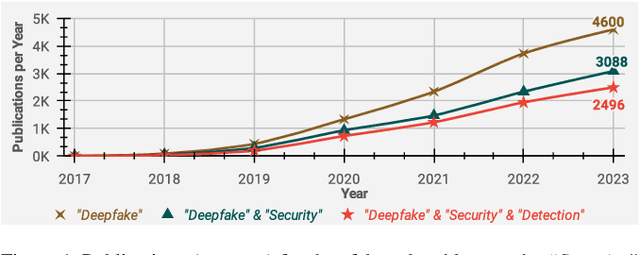SoK: Facial Deepfake Detectors
Paper and Code
Jan 09, 2024



Deepfakes have rapidly emerged as a profound and serious threat to society, primarily due to their ease of creation and dissemination. This situation has triggered an accelerated development of deepfake detection technologies. However, many existing detectors rely heavily on lab-generated datasets for validation, which may not effectively prepare them for novel, emerging, and real-world deepfake techniques. In this paper, we conduct an extensive and comprehensive review and analysis of the latest state-of-the-art deepfake detectors, evaluating them against several critical criteria. These criteria facilitate the categorization of these detectors into 4 high-level groups and 13 fine-grained sub-groups, all aligned with a unified standard conceptual framework. This classification and framework offer deep and practical insights into the factors that affect detector efficacy. We assess the generalizability of 16 leading detectors across various standard attack scenarios, including black-box, white-box, and gray-box settings. Our systematized analysis and experimentation lay the groundwork for a deeper understanding of deepfake detectors and their generalizability, paving the way for future research focused on creating detectors adept at countering various attack scenarios. Additionally, this work offers insights for developing more proactive defenses against deepfakes.
 Add to Chrome
Add to Chrome Add to Firefox
Add to Firefox Add to Edge
Add to Edge